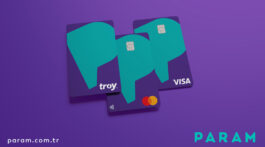Visa announced it will help its financial institution partners create customized digital card management experiences for their customers. As the Internet of Things (IoT) grows, consumers put their card on file and implement recurring payments in more places. To help give consumers more visibility and control, Visa is creating upcoming enhanced capabilities that will complement several existing Visa functionalities. These capabilities will be available for issuing partners to provide to their cardholders through their online and mobile banking channels. When implemented, the new capabilities will let issuers provide their Visa cardholders greater control and insight over how they pay, where they pay and who can pay using a digital version of their Visa card.
The new offerings will build on existing capabilities of Visa Token Service (VTS) to let issuers create a customizable suite of services to offer to their Visa cardholders. Visa Token Service replaces sensitive account information found on payment cards, such as the 16-digit account number, expiration date and security code, with a unique digital identifier that can be used to process payments without exposing actual account details.
New Capabilities to Provide Consumers with Greater Visibility and Control
The new Visa Network Hub Push Provisioning capability to be offered will simplify issuers’ access to push provisioning capabilities, by providing one integration point to interface with participating VTS token requestors. When implemented by an issuer, this would allow their Visa cardholders to easily add a digital version of their Visa card to participating VTS token requestors through the issuer’s mobile banking app or online banking channel. This means the bank’s consumers will not need to go through the process of individually signing-up for participating services, such as digital wallets, card-on-file merchants, e-commerce enablers and IoT providers. For example, the upcoming capability would help enable a consumer who receives a new Visa card from their financial institution to log into their bank’s mobile app and link their new card details to a digital wallet or online merchant before receiving the card in the mail.
In addition, an issuer may pair the Visa Network Hub Push Provisioning with Consumer Transaction Controls to create new experiences for cardholders. For example, issuers can offer cardholders the ability to give restricted card access to another user through a digital wallet, card-on-file merchant, e-commerce enabler and IoT provider. In this case, the cardholder could extend access in the form of a digital card to a trusted person, like a child or caregiver, to make purchases online or via mobile wallets, without giving access to a physical card or the full account details.
“As consumers become more connected, it is increasingly important for cardholders to be able to manage digital payment activities in one central location,” said Jim McCarthy, executive vice president, innovation and strategic partnerships, Visa Inc. “With these new capabilities, we are enabling our financial institution partners to deliver greater control, increased insights and enhanced security to their cardholders who make digital payments.”
Visa is also developing a new Visa Card-on-File Data API that will provide issuers with details around merchants where a consumer has stored their card on file. The API will scan transaction history and identify card-on-file transactions such as bill pay or subscriptions, providing Visa cardholders with additional insight into where their card is stored. Additionally, an issuer will receive information about where their customers’ cards are updated in the event of a reissuance, due to reasons like expiration or loss of card.
The new capabilities will be available to issuers in the United States and Australia in 2018.






